hw3#
(late assignments will not be accepted for graduating students)
Write a .do file which performs the tasks described below. Your .do file should be called
hw3.lastname.firstname.do. Do not submit your log files as part of the assignment.
Codebook#
Variable |
Description |
Values |
|---|---|---|
transplants.dta |
||
|
Center ID |
Integer |
|
Date of transplant |
Date |
|
Recipient has history of previous kidney transplant? |
Binary (1=Yes/0=No) |
|
Recipient’s age |
Integer |
|
Recipient’s BMI |
Numeric |
Question 1#
Clear the memory and load transplants.dta in your if 2 { code-block or whereever you think if fits best. Drop all observations with missing values on transplant_date. Reproduce the following graph as precisely as possible.
This graph shows a line plot of the number of cases performed in each calendar year. Be mindful about the thickness of the line, the main title, and the axis labels and titles.
Save the graph as q1_[yourname].png
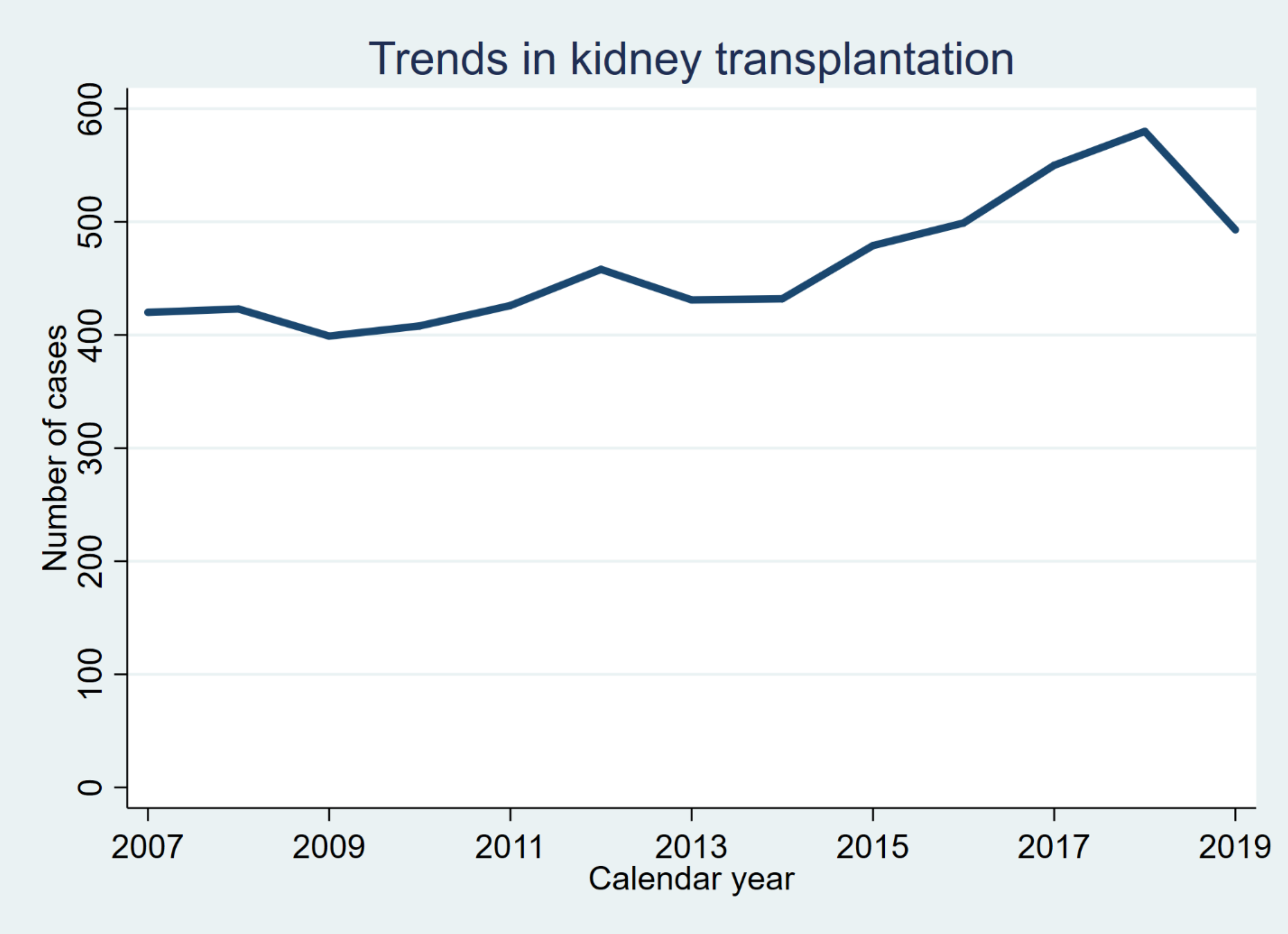
Question 2#
Clear the memory and load transplants.dta. Drop all observations with missing values on peak_pra. Reproduce the following graph as precisely as possible.
This graph shows a scatter plot of peak_pra and age, stratified by prev_ki. Observations with
prev_ki == 1 are shown in red. Be mindful about the color (“blue” and “red” in Stata color codes) and
size of the markers, the axis titles, and the legend.
Save the graph as q2 _[yourname].png
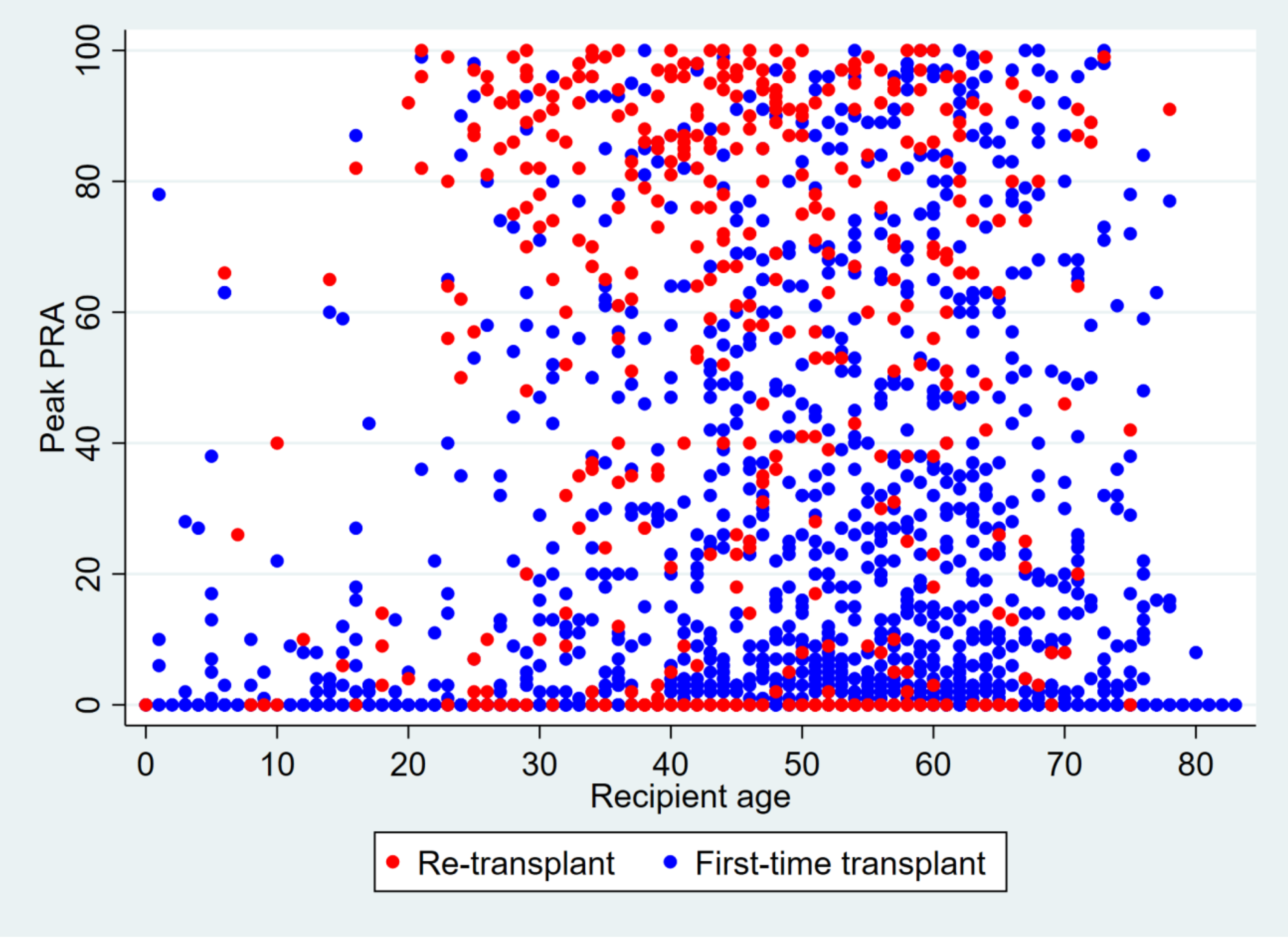
Question 3#
Clear the memory and load transplants.dta. Drop all observations with missing values for peak_pra. Reproduce the following graph as precisely as possible.
Calculate the average of peak_pra at each transplant center (ctr_id). Display the average value of
peak_pra after sorting. The location of the text label “National Average” can be hardcoded (i.e.
manually specify the location; about x=7 and y=17). Other markers and lines should NOT be hardcoded
and should be derived by your script using the dataset.
Save the graph as q3 _[yourname].png
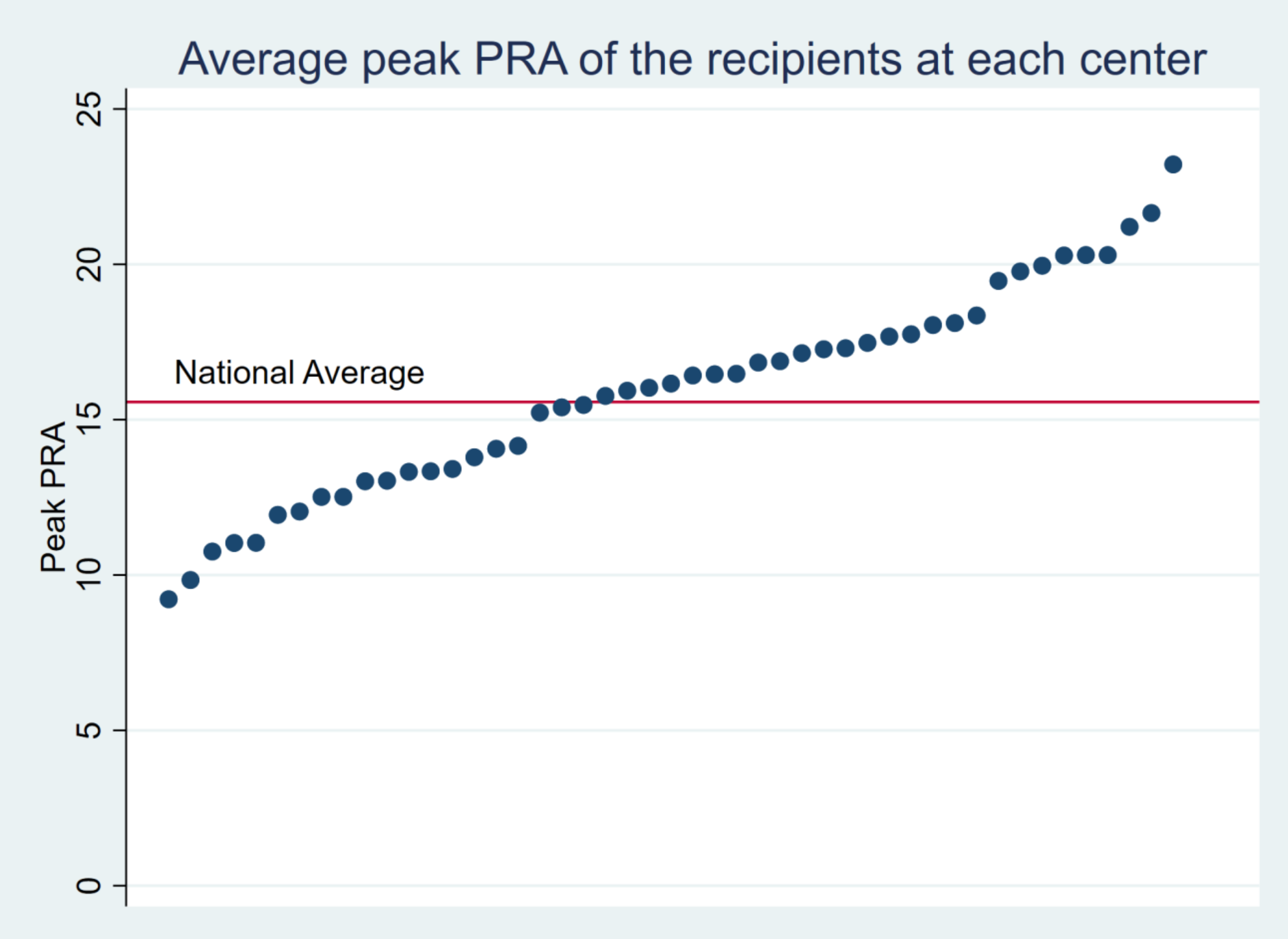
Question 4#
Print the following text: Question 4 : I estimate that it took me xxxx hours to complete this assignment. For example, if it took you six hours, your .do file
will contain the line
disp "Question 4 : I estimate that it took me 6 hours to complete this assignment."
Give an honest answer; this is just for our data collection purposes. Do not include time spent on the Extra Credit Challenge (see below). Everyone who answers question 4 will receive full credit for this question. However, this question is worth some points, so don’t skip it.
extra credit challenge#
Question 5#
Write a program called sampmean to plot random data drawn from a normal distribution. sampmean takes a list of numbers representing different sample sizes. It also takes (optionally) a mean and standard deviation for the normal distribution. If we run
sampmean, at(5 20 100 1000) mean(20)
We get a graph like this:
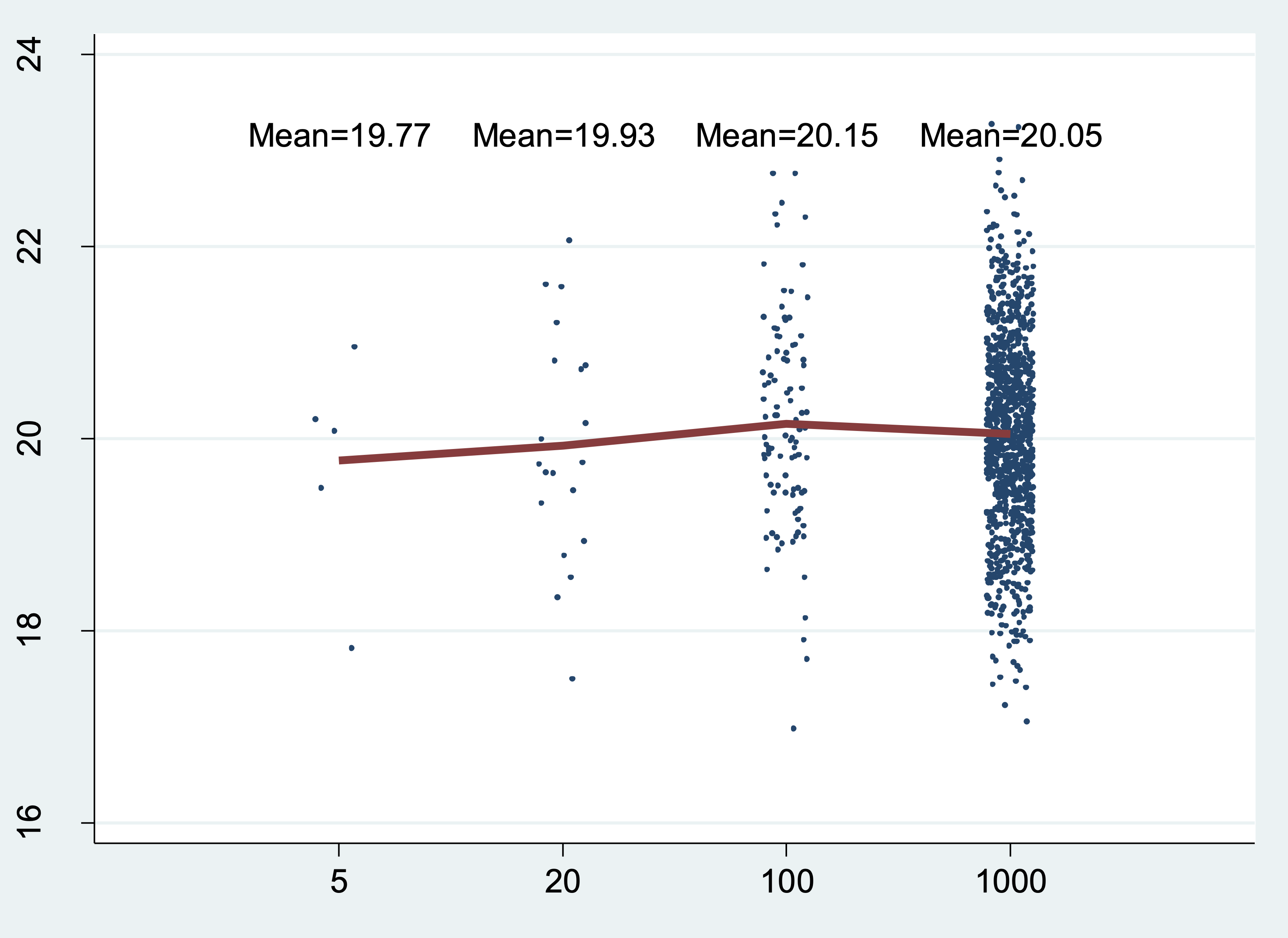
In this example, the program generates four sets of normally distributed random numbers (one set of 5 numbers, one set of 20, one set of 100, and one set of 1000) and calculates the mean for each set. It also plots each randomly generated number (as points) and the group mean (as a red line). The group mean also appears above each group as text.
Here are some more examples. The exact output will depend on the random number seed you use.
sampmean, at (4 8 16 32 64) mean(5) sd(3)
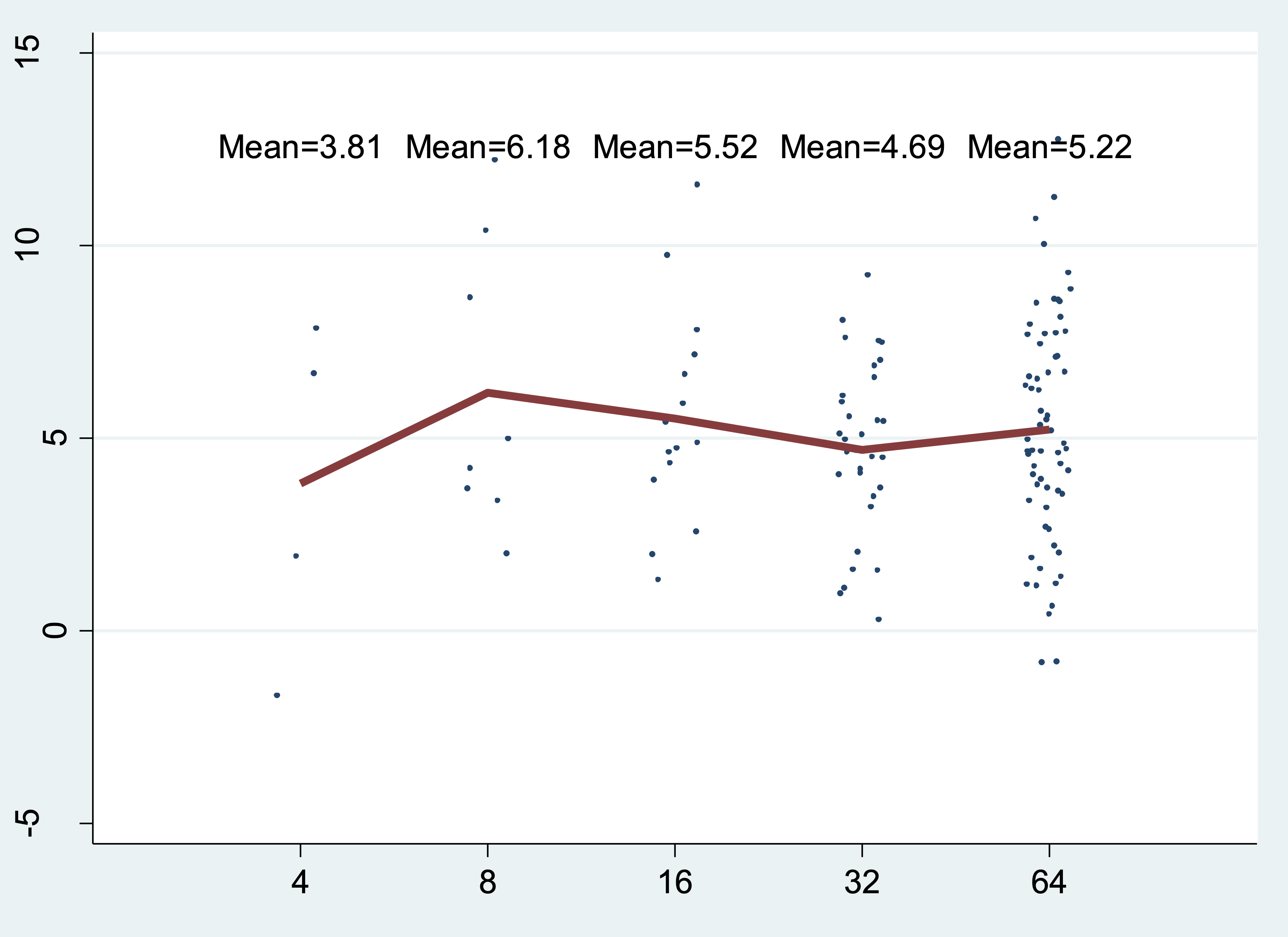
sampmean, at(100 200 300) mean(5) sd(2) uniform
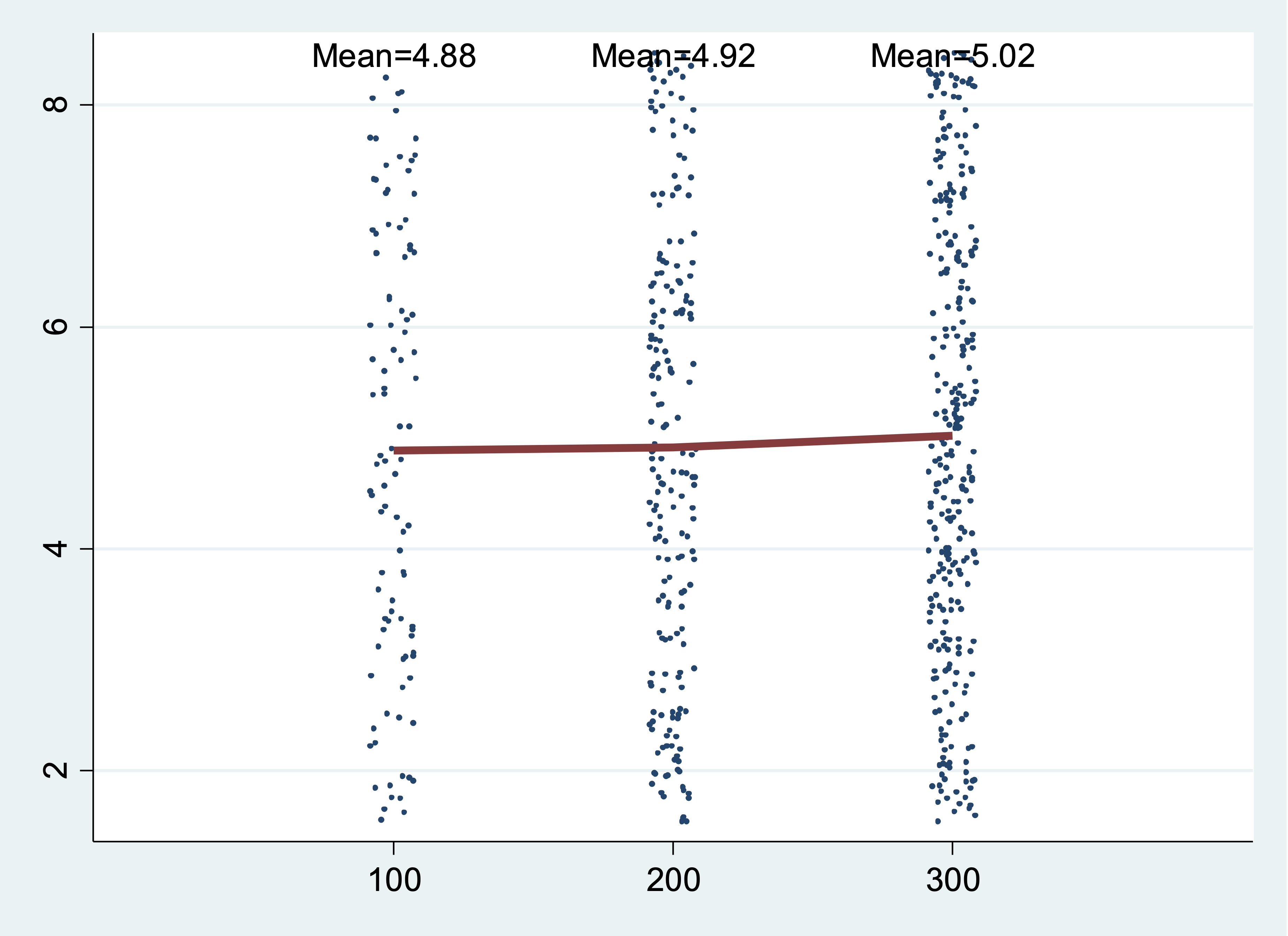
In the last example, the distribution is a uniform distribution instead of a normal distribution.
Hints:
You can use the keyword
numlist(for a list of numbers) just as you do with avarlist(list of variables)The uniform distribution from 0 to 1 has mean 0.5 and standard deviation sqrt(1/12).
Note: this problem is pretty hard! We expect that few people will solve the whole thing, but we will give partial credit for a partial (working) solution. If your program only works partly, then explain in the comments, like this:
//NOTE: my program does not display the means in the graph. //instead it prints them to the screen.
//Also "uniform" doesn't work,
//and my program runs for only one number (not a list)
